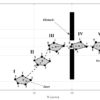A study of factors associated with post-traumatic stress disorder (PTSD) has led to a number of novel findings linking nutrition to experiences of PTSD. Notable among them is the discovery that Canadians, between the ages of 45 and 85, were less likely to exhibit PTSD if they consumed an average of two to three fiber sources daily.
“It is possible that optimal levels of dietary fiber have some type of mental health-related protective effect,” says Karen Davison, Director of the Nutrition Informatics Research Group and Health Science Program Faculty Member at Kwantlen Polytechnic University. “This may be due to the communication network that connects the gut and brain via short chain fatty acids (SCFAs), which are metabolic byproducts of bacterial fermentation made by microbes in the human gut.”
“Produced from fermenting fiber in the colon, SCFA molecules can communicate with cells and may affect brain function,” Davison says.
Other diet-related factors found to be associated with an increased likelihood of PTSD included daily consumption of pastries, pulses and nuts, or chocolate.
“This finding that increased intakes of pulses and nuts were associated with increased odds of PTSD was unexpected,” states Christina Hyland, a doctoral student at the University of Toronto’s FIFSW. “However, the measures for these in the Canadian Longitudinal Study on Aging dataset included sources such as peanut butter, and may have also included less healthy variations such as salted or candied nuts.”
The study team analyzed data from the baseline Canadian Longitudinal Study on Aging, which included 27,211 participants aged 45-85 years, of whom 1,323 had PTSD.
Other factors associated with PTSD
The study also found relationships between PTSD and factors such as poverty, gender, age, immigration history, ethnicity, marital status and physical health.
Poverty was strongly associated with PTSD, with one in every seven respondents whose household income was under $20,000 per year experiencing the disorder.
“Unfortunately, we do not know whether PTSD symptoms undermined an individual’s ability to work, which resulted in poverty or whether the stress associated with poverty exacerbated PTSD symptoms in respondents,” says senior author, Esme Fuller-Thomson, director of the Institute for Life Course & Aging and professor at the University of Toronto’s Factor-Inwentash Faculty of Social Work (FIFSW) and Department of Family & Community Medicine.
Women had almost double the prevalence of PTSD in comparison to men (6.9% versus 3.9%). And those who were widowed or divorced were twice as likely to experience the disorder compared to those who were married or living common-law (8.8% versus 4.4%).
When it came to age, the prevalence of PTSD was highest for those 45 to 54 years old (6.4%) and lowest for those aged 75 and older (3.1%).
“This supports previous research, which found that PTSD tends to be most common among men in their early 40s and women in their early 50s,” says co-author, Karen Kobayashi, Professor in the Department of Sociology and a Research Fellow at the Institute on Aging & Lifelong Health at the University of Victoria.
The prevalence of PTSD was higher among individuals who had at least two health conditions, who were experiencing chronic pain, or who had a history of smoking.
“This is consistent with results from other studies, which found increased risks of cardiovascular, metabolic, and musculoskeletal conditions among individuals with PTSD,” states co-author Meghan West, a Master of Social Work student at the U of T’s FIFSW. “These links may be due to alterations in the hypothalamic-pituitary-adrenal axis (HPA axis), sympathetic nervous system inflammation, or health behaviours that increase the risk of poor physical health.”
The prevalence of PTSD among visible minority immigrants (7.5%) was more than double that of white immigrants (3.6%) and approximately 50% higher than whites born in Canada (5.6%).
“Our findings underline the importance of considering race and immigration status separately,” states co-author Hongmei Tong, Assistant Professor of Social Work at MacEwan University in Edmonton.
“Visible minority immigrants in Canada are largely from South Asia, China, and the Middle East, where groups of individuals have experienced political conflict and/or disruption during the previous 60 years,” he says. “Immigrants from these regions are also more likely to have experienced traumatic incidents such as natural disasters and armed conflict, and could be at greater risk of PTSD as a result. As such, there may be a greater need for mental health resources for visible minority immigrants.”
The results of this study were published this week in Social Psychiatry and Psychiatric Epidemiology, an international medical journal that focuses on the epidemiology of psychiatric disorders.
One in four older refugees are in psychological distress—even decades after resettlement
More information:
Social Psychiatry and Psychiatric Epidemiology, DOI: 10.1007/s00127-020-02003-7
Provided by
University of Toronto
Citation:
Experiences of post-traumatic stress disorder linked to nutritional health (2021, February 3)
retrieved 3 February 2021
from https://medicalxpress.com/news/2021-02-post-traumatic-stress-disorder-linked-nutritional.html
This document is subject to copyright. Apart from any fair dealing for the purpose of private study or research, no
part may be reproduced without the written permission. The content is provided for information purposes only.



